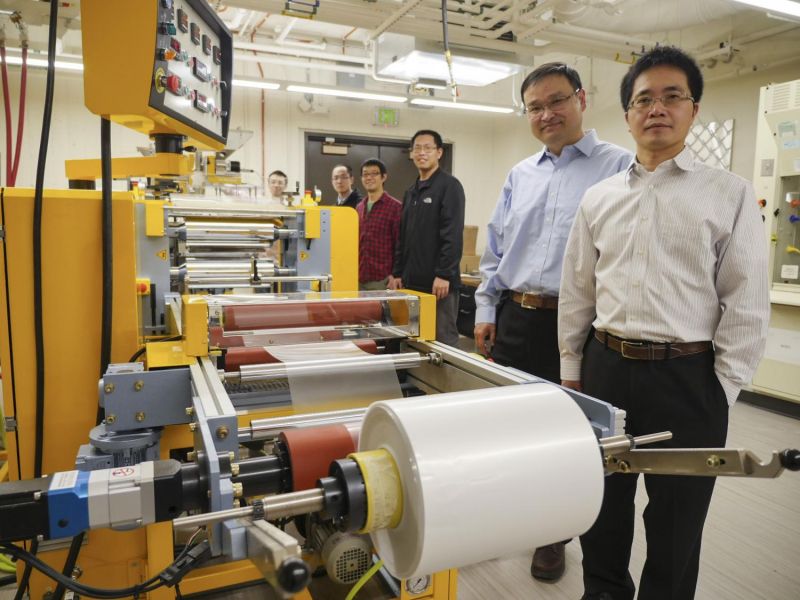New Passive Cooling Material That Uses No Energy Or Water
Published on by Water Network Research, Official research team of The Water Network in Technology
A team of University of Colorado Boulder engineers has developed a scalable manufactured metamaterial to act as a kind of air conditioning system for structures.
It has the ability to cool objects even under direct sunlight with zero energy and water consumption.

Image source: CU Boulder Today
When applied to a surface, the metamaterial film cools the object underneath by efficiently reflecting incoming solar energy back into space while simultaneously allowing the surface to shed its own heat in the form of infrared thermal radiation.
The new material, which is described in the journal Science, could provide an eco-friendly means of supplementary cooling for thermoelectric power plants, which currently require large amounts of water and electricity to maintain the operating temperatures of their machinery.
The researchers’ glass-polymer hybrid material measures just 50 micrometers thick — slightly thicker than the aluminum foil found in a kitchen — and can be manufactured economically on rolls, making it a potentially viable large-scale technology for both residential and commercial applications.
“We feel that this low-cost manufacturing process will be transformative for real-world applications of this radiative cooling technology,” said Xiaobo Yin, co-director of the research and an assistant professor who holds dual appointments in CU Boulder’s Department of Mechanical Engineering and the Materials Science and Engineering Program. Yin received DARPA’s Young Faculty Award in 2015.
The material takes advantage of passive radiative cooling, the process by which objects naturally shed heat in the form of infrared radiation, without consuming energy. Thermal radiation provides some natural nighttime cooling and is used for residential cooling in some areas, but daytime cooling has historically been more of a challenge. For a structure exposed to sunlight, even a small amount of directly-absorbed solar energy is enough to negate passive radiation.
The challenge for the CU Boulder researchers, then, was to create a material that could provide a one-two punch: reflect any incoming solar rays back into the atmosphere while still providing a means of escape for infrared radiation. To solve this, the researchers embedded visibly-scattering but infrared-radiant glass microspheres into a polymer film. They then added a thin silver coating underneath in order to achieve maximum spectral reflectance.
Read full article: CU Boulder Today
Media
Taxonomy
- Polymeric Membranes
- Water-Energy Nexus
- Energy Efficiency
- Consumption
- Efficiency Improvement
- Polymers & Plastics
- Power Plants
- Energy Consumption